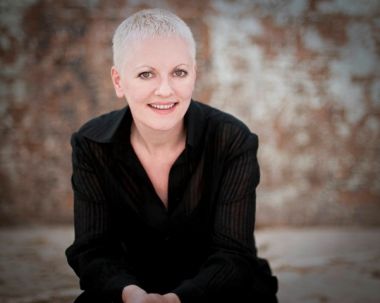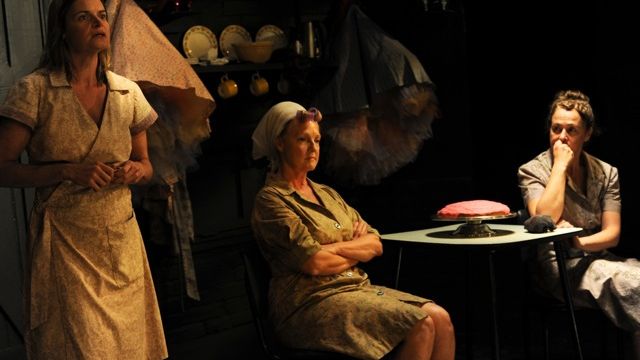Kate Gaul: The New Electric Ballroom
Stage Whispers’ Whitney Fitzsimmons recently caught up with director Kate Gaul to talk about her exciting new show, The New Electric Ballroom, staged as part of the Griffin Independent season.
Whitney Fitzsimmons: The New Electric Ballroom is set in a fictional town on the West Coast of Ireland. Do you think it will be hard for Australian audiences to relate to?
Kate Gaul: Not at all, it’s a family drama. It’s also a love story. So the location is Ireland and that’s where the play was generated from but ultimately the characters will be extremely recognisable. I think when the play starts you think who are these people and what are they doing. But after a while you tend to think that the conflict that is played-out could be something happening in your own home.
WF: What attracted you to Enda Walsh’s script?
KG: It’s very energetic. The text is very powerful and the text is very heightened language. He’s very theatrical. He’s quite cheeky and he sets a lot of challenges. I like the play because it was essentially a story for three older women and the fact that you feel the tradition of Irish classical drama quite strongly but it’s very much a contemporary play.
WF: Three roles for women is quite rare - that was a big deciding factor. Are you of the view that there is still a dearth of good roles for women?
KG: They are harder to find that’s for sure. But Irish drama does actually have a lot of good strong roles for women actually. It’s a kind of cultural thing I think.
WF:What are the key messages and themes of the play?
KG: Take a risk. The plays is asking us to take risks with our lives. That we have a pattern of existence, but if we want to change that we have to take chance. I guess hope is very important. That love does exist but you have to have hope and take chances to experience it and that experiencing I guess real emotions and having real experiences can be very powerful. That we are trapped by our own history and that our history as we mythologise it does become our identity. I guess it does pose the question do we have the power to change our own histories? How powerful is language? Is language powerful or do we just think it is.
 WF: Now as an independent production how much support do you get from Griffin compared to a Griffin main-stage play?
WF: Now as an independent production how much support do you get from Griffin compared to a Griffin main-stage play?
KG: Yeah well there’s no subsidy as such in terms of hard cold cash. But The Griffin are very generous in terms of their marketing and publicity support, their technical assistance, and should people require dramaturgical or artistic support it’s definitely there. The venue of course is extremely well maintained and accessible and you obviously become part of The Griffin branding which as we know is really starting to take off. So there’s a lot of in-kind support and if you could put a figure on that it would probably be around the 25 thousand dollar mark. But there’s still hard to really pay people properly or to achieve I guess those incredibly ambitious productions where you need a lot more time or people involved.”
WF: Why do you think we don’t have the tradition of patronage in Australia compared to the United States?
KG: Smaller population probably and not a strong history if it. It’s been very hard to develop a strong cultural voice. Quite often in other countries the cultural voice is stronger from settlement in a way. I think that government funding can tend to homogenise outcomes. I’m very wary of that. Having said that all of the major performing arts organisations are quite distinct. But it‘s about ways of doing things and ways of doing things emerge often in relation to how you are doing it or how you are resourcing yourself. It can be quite subtle - you see it happen to people all the time. But having said that government support needs to be tripled, quadrupled, then there would be more perhaps for other people.
WF: What your view of the state of theatre in Sydney and across the country?
KG: I’m always looking for the new and unusual and I think every city has its charms. I’m always excited by new venues opening and new groups emerging. I think there is a vibrant scene, but I think it’s not necessarily in the curated venues or in the established venues. I tend (because I am a broad consumer) to look elsewhere for my kicks. But I do think there are strong healthy seasons.
WF: Barry Koski left Australia because he found it too limiting - have you ever felt frustrated or tempted to just go overseas and work?
KG: Well I’ve never acted on it if I have put it that way. I spent some time in Buenos Aires and in New York and London and obviously in areas of bigger populations there is more stuff happening and it’s often more avant garde - I mean the range from the traditional through to the avant garde is very strong. I would love to be living in an environment like that but sometime in the next 100 years Sydney will be like that too.
WF: Are there enough opportunities for female directors?
KG: There are never enough opportunities - that’s across the board and I definitely think that women are strongly underrepresented in peak creative positions - that’s not even an opinion that‘s just a fact. So we don’t need to debate that - that’s just a fact. I’m not sure how to change that except by example. So I’m not going to stop what I’m doing just because somebody doesn’t acknowledge what I do. I will find ways to achieve what I want to achieve. Not everyone can do that but hopefully that will provide some encouragement to others.”
The New Electric Ballroom runs from 7th– 31stof March, 2012 at the SBW Stables Theatre, Kings Cross.
Images: (top) Jane Phegan, Genevieve Mooy and Odile Le Clezio in The New Electric Ballroom. Photographer: Heidrun Lohr. (Lower) Kate Gaul.
Further reading. Our review.
Subscribe to our E-Newsletter, buy our latest print edition or find a Performing Arts book at Book Nook.

